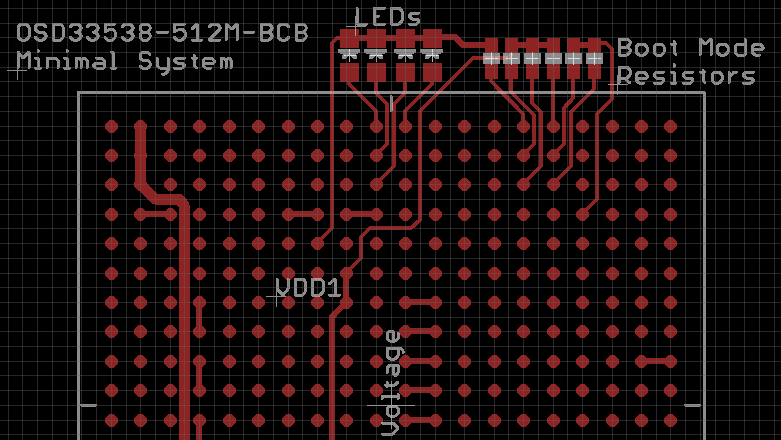Once upon a time, small Linux-capable single board computers were novelties, but not anymore. Today we have a wide selection of them, many built around modules we could buy for our own projects. Some of the chipset suppliers behind these boards compete on cost, others find a niche to differentiate their product. Octavo Systems is one of the latter offering system-in-package (SiP) modules that are specifically designed for easy integration. They described how simple it would be to build a minimal computer using their SC335x C-SiP, and to drive the point home they brought a deadbug implementation to Embedded World 2019. [Short video after the break.]
Most of us encounter Octavo modules as the heart of a BeagleBoard. Their increasing integration made tiny wonders like PocketBeagle possible. But bringing out all those pins for use still required a four-layer circuit board. Octavo’s pitch for hardware professionals center around how easy integration saves time for faster time to market, and fortunately for us easy integration also translates to a more accessible device for our projects. It’s one thing to publish a document describing a hypothetical single-layer PCB for an Octavo module, it’s quite something else to show that concept in action with no PCB at all.
Of course, this little machine only has access to a fraction of the module’s functionality, and it is certainly overkill if the objective is just to blink a few LEDs. If so, we’d just use 555 timers! But it does show how simple a bare bones “Hello World” machine can be built, removing intimidation factor and invite more people to come play.
One of the three top winners in our circuit sculpture contest was a wireframe Z80 computer. There’s quite a jump from a Z80 to an Octavo SC335x, but we’ve already seen one effort by [Zach] over Supercon 2018 weekend to build a deadbug computer with an Octavo module. It won’t be long before someone one-ups this minimalist LED blinker with something more sophisticated and we can’t wait to see it.
















It is nice to be able to use a BGA package on a single-layer with 6-mil trace and space. Keeping the pitch course and the layer count low can help save several tens of cents per device PCB, which really adds up in a production run.
Paying $35, for the equivalent hardware to a Raspberry Pi Zero doesn’t help, though.
The SIP is actually like a Pi Zero in a BGA package. It is still just a module.
The Beaglebone has hardware I/O coprocessors that, among other things, can be used as a 100MHz, 16 channel logic analyzer.
Is this the guy that was working on the same thing at Supercon?
Nope. Michael and I got USB enumeration but couldn’t get the damn thing to boot. Props to Octavo for getting this to work!
I have thought about doing this. Of course, if you need off-chip memory and HDMI and a bunch of other high-pin-count additions, it gets ridiculous pretty quick, but I’ve done enough blue wire mods on fine-pitch parts, I don’t think that connecting things to solder balls would be overly challenging, for simpler systems. By which I mean, things like wiring from a SOC to a USB hub chip and then to various USB peripherals, that sort of thing.
Octavo, has a great idea with what they have done. However there are so many things out there now that are faster and cheaper. I wish they would have picked a faster core to do it with.
I think most AM335x users don’t care that much about the mediocre performance of its 1 GHz* Cortex-A8 core, they use it for mainly for its I/O capabilities and the real-time capability provided by its PRU subsystem. The core is usually perfectly adequate, which is all it needs to be.
(* 1 GHz assuming you’re using an AM335x from the highest speed bin, like those Octavo uses for the OSD335x.)
How many layers does the module have though
Video after the break
$60 at 1pcs volumes?!